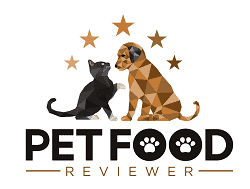What Is Choline Chloride?
Choline Chloride is an organic compound that has the appearance of a water-soluble white salt. Choline Chloride is not a naturally occurring compound, or at least not one that is extracted from natural sources.
Instead, Choline Chloride is produced in a laboratory setting by mixing various chemical compounds.
Choline Chloride is not widely used in industry but has two main uses. The first use is as an additive in animal feed, especially feed for poultry birds like Chickens and Turkeys. Its presence in animal feed helps accelerate the growth of poultry birds.
Choline Chloride can also be used in some industrial processes, such as in the fluids involved in drilling and extraction of oil and gas.
However, the reason you are researching Choline Chloride is that you have most likely seen it on the ingredient list of your dog’s favorite food or a new recipe you are considering.
Why Is Choline Chloride In Pet Food?
Choline Chloride is present in pet food recipes to provide the nutrient Choline, and Choline is extremely similar to some of the B Vitamins, like Vitamin B3, B6, or B12.
Choline plays an important role in a dog’s or cat’s diet and is a critical component for various bodily functions.
Some of the best-known examples and benefits of Choline include helping to support and develop the nervous system and brain function, reducing swelling and inflammation related to asthma, and improving memory and mental function.
However, Choline is naturally present in various ingredients that are commonly found in pet food recipes, including Salmon, Chicken, Eggs, Peas, and Flaxseed.
However, while these ingredients are some of the most popular used in dog and cat food recipes, some pet food recipes do not contain these ingredients, or they are not present in sufficient quantities.
This means that pet food manufacturers have to top off the levels of Choline in the recipe by other means, hence the inclusion of the compound Choline Chloride.
Is Choline Chloride Bad For Pets?
No Choline Chloride is not bad for pets, especially in the tiny quantities found in most pet food recipes. In fact, its inclusion is likely a positive for many dogs and cats who may not be getting sufficient Choline in their diet.
However, some of the controversies around Choline Chloride and other similar vitamins and minerals is around whether they are “natural”.
Given that Choline Chloride is created and produced in a laboratory setting, some are uncomfortable with its use in food products, even for animals.
There is also some minor discussion on whether Choline Chloride is the best source of Choline to add to pet food recipes and whether some other compounds may be better.
While it is true that pet food manufacturers try to minimize their costs when sourcing ingredients and additives, the cost difference between Choline Chloride and alternatives is likely to be extremely minimal.
Pet Food Brands That Use Choline Chloride
Due to the fact that providing minimum levels of certain vitamins in dog and cat food is mandatory in the United States and other countries, Choline Chloride gets significant use.
There are many pet food brands that include it in their recipes, and some of the biggest and best-known examples include Purina Pro Plan, Iams, Hill’s Science Diet, Diamond, Taste of the Wild, Blue Buffalo, Rachael Ray Nutrish, Victor, and Nutro.
You can see an example of the use of Choline Chloride in a dry dog food recipe below with the ingredient list of Taste of the Wild’s Pacific Stream formula.
As you can see, Choline Chloride is present in this recipe in high quantities and is the second most abundant additive, second only to Salt.
It’s not clear why this Taste of the Wild has this much Choline Chloride present, and most other dog food recipes have a much smaller trace amount.
While we don’t think it should be a major concern, if you do not want to feed your pet’s food with Choline Chloride, we recommend closely studying the ingredient list of any prospective recipes to see if it is present.




